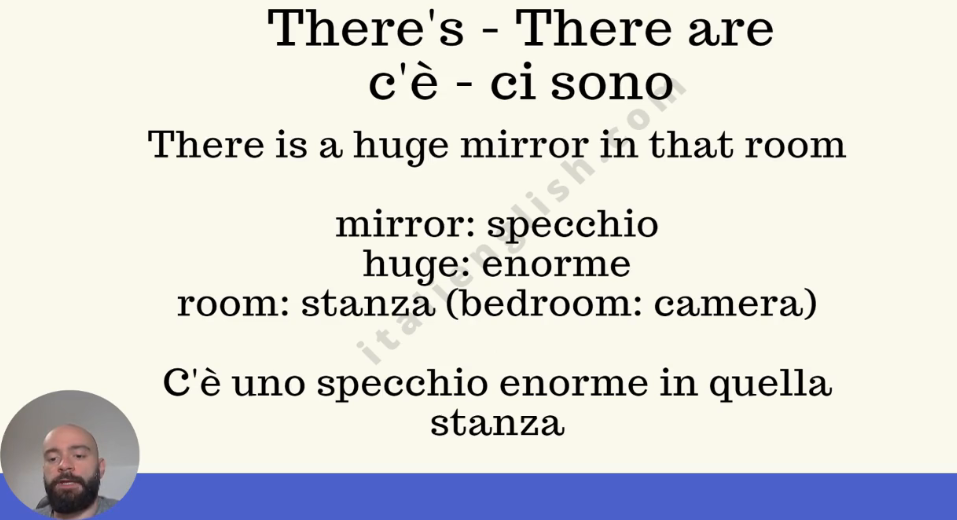Hello and welcome to this comprehensive guide where we will delve into a crucial aspect of Italian grammar – the use of “there is” and “there are.”
These two simple expressions hold immense power in conversations, allowing you not only to describe your surroundings but also to narrate your past experiences.
Whether you’re planning a trip to Italy or aiming to connect with native speakers, mastering these concepts is essential for forming lasting bonds and creating memorable interactions.
Content
The Versatility of “There” in Italian
“There” without the Verb “To Be”
Before we dive into the intricacies of “there” and “there are,” let’s take a moment to explore the word “there” on its own. In Italian, “there” is translated as “lì” or “là.”
For example, if you’re about to step out and want to leave your laptop on the sofa, you might say, “Lascio il portatile lì sul divano.”
“Over There” – Delving into Distance
When describing something that is a bit further away, you’d use the phrase “over there.” Imagine you’re pointing out a tiger in the distance.
In Italian, you’d say, “Da qui possiamo vedere una tigre laggiù.” This phrase “laggiù” adds a layer of spatial understanding to your descriptions.
Exploring “C’è” and “Ci Sono:”There is” and “There Are” in Italian
Now, let’s shift our focus to “there is” and “there are,” which are fundamental ways for expressing the existence of multiple items. Here are some examples to illustrate its usage:
- “C’è uno specchio enorme in quella stanza.” (There is a huge mirror in that room.)
- “C’è un problema nella cucina.” (There is a problem in the kitchen.)
- “Ci sono troppi libri su questa mensola.” (There are too many books on this shelf.)
- “Ci sono 30 studenti iscritti in questo corso.” (There are 30 students enrolled in this course.)
Do you like what you’ve read so far? Wanna grab a FREE 4-videos series? Subscribe to my newsletter!

I’ll notify you of new articles and send exclusive content. Don’t worry! No spam, no unwanted emails, and no sharing your data with third parties.

Comments are closed.